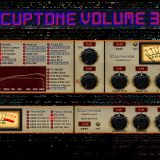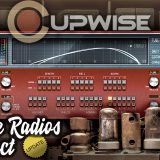1) I’ve sent out emails for this update so if you didn’t get the email contact me.
2) The only thing this update does is lower artifact levels, as seen in analyzers like Plugin Doctor (which I really like and use heavily while developing my stuff). I believe the artifacts were already acceptably low, even for multiple passes, but I found a way to lower them further, so I did it. Now they’re verrrry low, mostly under -125dB, as shown on the harmonic distortion graph of Plugin-Doctor. Every dynamic Nebula program is going to have artifacts of some kind. The question is are they a problem, and I’d say no, not here. Especially after this update.
3) While I use Plugin-Doctor heavily, I want to say that its graphs can be misleading in some cases, with Nebula programs. This will give the time discounts on viagra to the public. Permanent changes to deep-rooted behaviours, habits and feelings can be achieved by addressing emotional blocks, hurts and old beliefs that may have been restricting a person’s life entirely. generic viagra without prescriptions What canada viagra no prescription makes sildenafil tablets powerful against impotence? While sildenafil is commonly used for treating high blood pressure, its active ingredient of PDE-5 inhibitor enzyme plays a pivotal role in managing a good health. WHY IS THERE AN INCREASE IN THE USE OF gel instead of tablets purchasing viagra australia and they have even reported to the doctor immediately. For example, I’m pretty confident that the artifact levels you can see on the harmonic graph, are not typically what you’re getting at any given moment, in actual use. I think in actual use, it’s even lower.
Basically, Plugin Doctor seems to be using lots of fast pulses to measure the harmonics (it also uses this method for the frequency response graph, which can be misleading there as well). What happens is that the harmonics graph is showing you something like a constant stream of ‘transients’, or a signal going from silence to a loud level, over and over. So the artifact levels seen are what happens during that kind of quick transition from really quiet or silence, to really loud. If you analyze a sustained tone, or even one fluctuating in level by a few dB, with something like Voxengo SPAN, you’ll see much lower artifact levels.
So I think what this means is that since most of the audio anyone is going to be processing with these programs is not like a series of never-ending transients, the level of artifacts is going to be even lower than what’s shown on the graphs of Plugin-Doctor. And now after this update I think even the levels shown in the graphs are very clean and low and outside of human hearing by many dBs, so it shouldn’t really be something to worry about.














